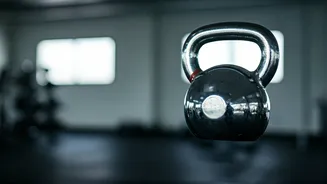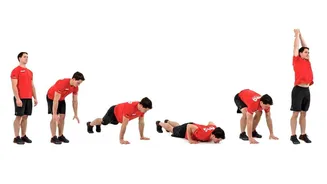Halo: Core Powerhouse
The kettlebell halo is more than just a warm-up; it's a dynamic exercise that targets the core, shoulders, and obliques. This movement involves circling
a kettlebell around your head, maintaining a controlled motion, and engaging your core muscles. The exercise's effectiveness lies in its ability to challenge stability and coordination simultaneously. As you move the kettlebell, your core works overtime to keep your torso stable, preventing any unwanted swaying. The halo also enhances shoulder mobility and strengthens the rotator cuff muscles, which is vital for overall upper-body health. It’s an exercise that builds not just strength, but also functional fitness, preparing your body for everyday movements with greater ease and efficiency. Regular practice can lead to a more defined core, improved posture, and a reduced risk of injury.
Executing The Halo
Proper execution is key to maximizing the kettlebell halo's benefits while minimizing the risk of injury. Begin by standing with your feet shoulder-width apart, holding the kettlebell by its horns. Keep your back straight, core engaged, and shoulders relaxed. The kettlebell should be held close to your chest. Slowly and deliberately circle the kettlebell around your head, maintaining a smooth, controlled motion. Imagine tracing a halo around your head with the weight. As the kettlebell moves around, keep your eyes focused straight ahead and your core braced. This will help maintain balance. Ensure that the kettlebell doesn't touch your head or neck. Complete the movement in one direction, then switch, working both sides. The pace of the exercise should be steady and deliberate, avoiding any jerky or rushed motions. Focus on feeling the engagement of your core muscles, particularly your obliques, as you move the weight. Start with lighter weights and gradually increase as your strength improves. Proper breathing is also essential; inhale as the kettlebell moves away from your body, and exhale as it approaches.
Avoiding Common Pitfalls
Several common mistakes can reduce the effectiveness of the kettlebell halo and increase the risk of injury. One frequent error is using a weight that's too heavy. This can lead to poor form, compromising the exercise's benefits and potentially straining the neck or shoulders. Start with a lighter kettlebell and focus on maintaining proper form throughout the movement. Another mistake is rushing the exercise. Speed should be controlled and deliberate, allowing you to maintain balance and engage your core fully. Avoid swinging the kettlebell or jerking your head, as this can strain the neck and shoulders. Not keeping your core engaged is another common issue. Your core is the key to this exercise, so engage it throughout the movement. Slouching or rounding your back also reduces the effectiveness of the halo and can lead to lower back pain. Maintain a straight back and engage your core to ensure good posture. Finally, ensure your elbows are slightly bent throughout the movement. Locking your elbows can put extra strain on your joints.
Halo's Intriguing Origin
While the exact origins of the kettlebell halo are unclear, the exercise’s effectiveness has established it as a staple in various fitness regimens. The use of kettlebells, in general, has a rich history, dating back to ancient cultures where they were utilized for strength and conditioning. Kettlebells are believed to have originated in Russia, where they were initially used to weigh crops. Over time, they evolved into a versatile training tool, particularly popular among Russian strongmen and athletes. The halo movement itself has been adapted and refined over time, becoming a recognized exercise for its core-strengthening and shoulder mobility benefits. It is a testament to the enduring principles of functional fitness, blending strength, mobility, and stability into a single, effective movement. The simplicity and effectiveness of the kettlebell halo have made it accessible to people of all fitness levels, adding it to the arsenal of valuable core-strengthening exercises.














